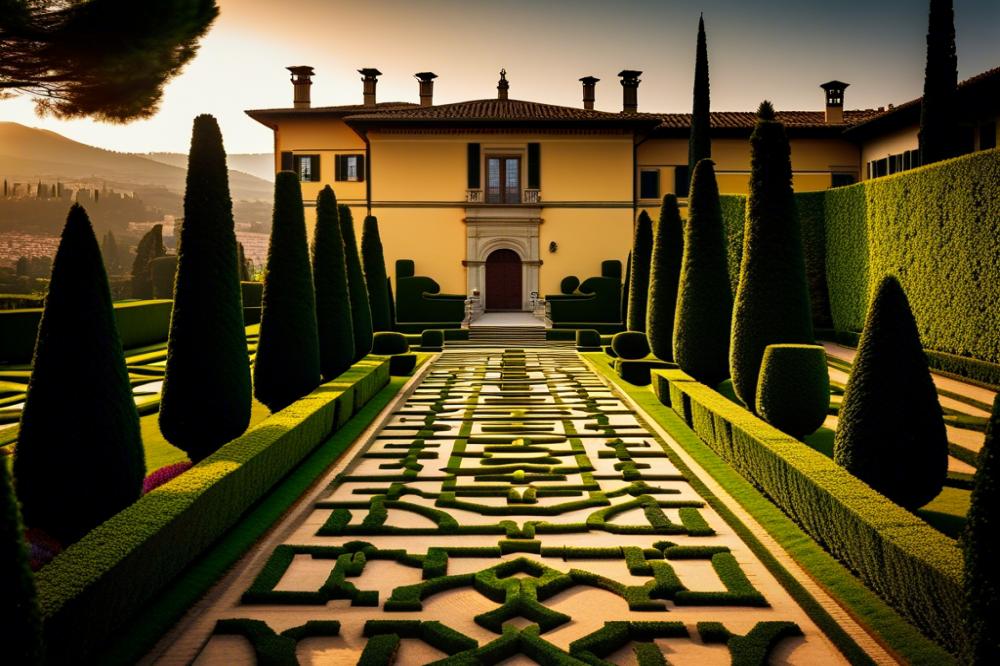The Formal Italian gardens of Villa Gamberaia in Florence
Located on the beautiful hills overlooking Florence, Villa Gamberaia serves as a prime example of formal Italian gardens. These meticulously designed landscapes reflect the grandeur of both nature and human artistry. They represent a significant aspect of Italy’s cultural heritage, connecting the past with the present.
The gardens stand as a testament to the refined garden aesthetics prominent during the Renaissance. They were not simply a backdrop but rather an extension of Renaissance architecture, showcasing the harmonious relationship between built and natural environments. This period valued symmetry, proportion, and relationship to nature, all of which are evident in these historic gardens.
Visitors to Villa Gamberaia find themselves surrounded by a rich collection of Mediterranean plants. These selections create a lush tapestry that highlights the importance of biodiversity in garden tourism. The layout consists of structured pathways, parterres, and fountains, which all contribute to the landscape design that enchants countless tourists each year.
In the context of famous Italian gardens, Villa Gamberaia holds a cherished place. It not only displays the botanical beauty of the era but also tells a story of cultivation and innovation. Through the centuries, these gardens have become a symbol of elegance and an enduring source of inspiration for garden enthusiasts and professionals alike.
Historical Background
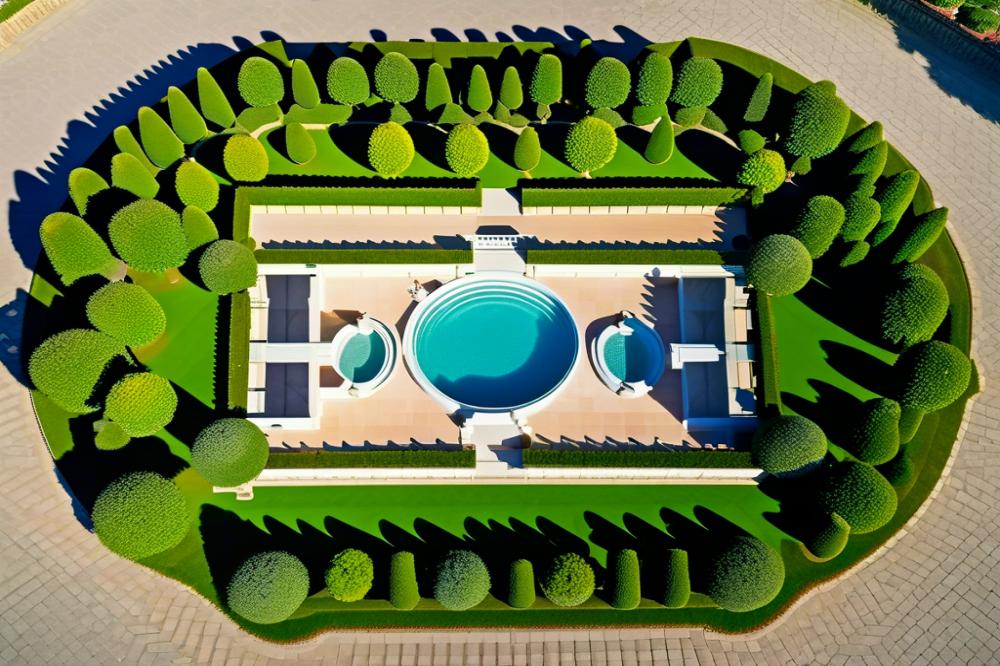
The origins of Villa Gamberaia trace back to the early 17th century. Located near Florence, this estate reflects the spirit of Renaissance architecture. Initially a modest farmhouse, it transformed into an elegant villa under the direction of influential families. Among them, the prominent Bardi family played a vital role in shaping its early identity.
As time passed, the villa became renowned for its stunning formal gardens. Designed in a manner that emphasizes symmetry and balance, these gardens are exemplary of landscape design from the era. They incorporate a wide variety of Mediterranean plants, showcasing the region’s rich botanical beauty. These gardens are also significant for their visual and aesthetic harmony, which draws on the cultural heritage of Tuscany.
Through the years, the gardens evolved under various custodians. Notably, a key figure in their development was the architect and garden designer, Giovanni Battista Nelli. His innovative concepts enhanced the garden aesthetics, creating spaces that encouraged reflection and enjoyment. His influence remains evident in the layout and plant choices seen today.
Today, Villa Gamberaia stands as a testament to the era’s garden tourism. Visitors flock to admire its historic gardens, which offer a glimpse into the craftsmanship of the past. Experience seekers appreciate the tranquil atmosphere and the striking views overlooking the Florentine landscape. Each corner of the garden tells a story, connecting visitors to Italy’s rich cultural history and artistic legacy.
Over time, this villa has become a symbol of beauty and tranquility. Visitors often describe it as a unique escape from the bustling city of Florence. By preserving its architectural integrity and garden legacy, Villa Gamberaia continues to captivate those who seek the elegance of formal gardens.
Garden Design and Aesthetics
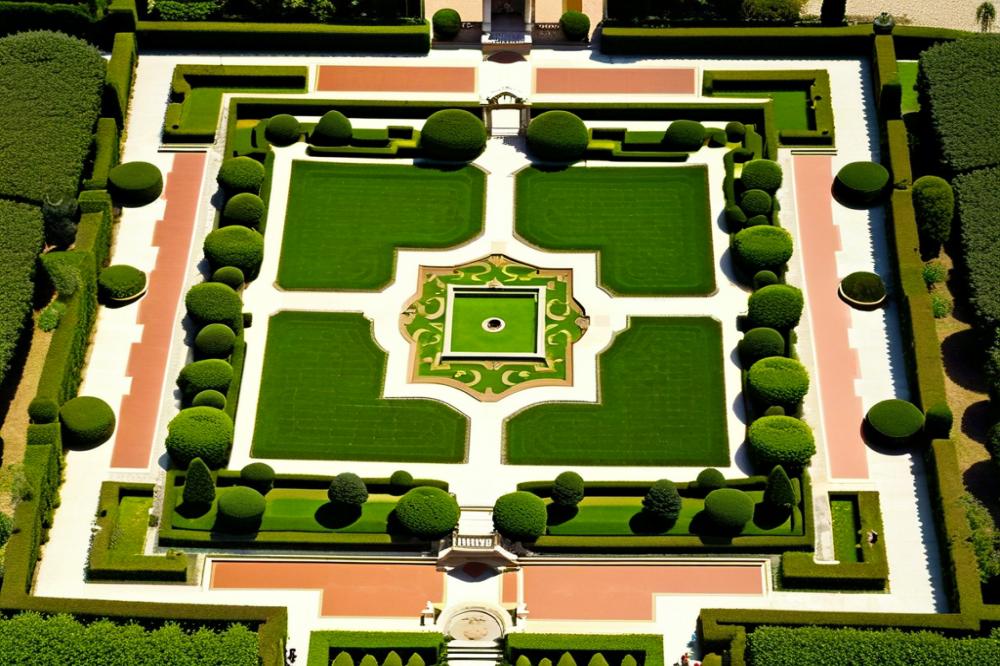
The formal gardens of Villa Gamberaia in Florence are a testament to the principles of Renaissance architecture. This style emphasizes balance, harmony, and proportion. Each element is carefully arranged to achieve a striking sense of order. Visitors immediately notice the symmetry that governs the garden’s layout. Pathways cut through the greenery in straight lines, guiding the eye and enhancing the tranquil atmosphere.
Water features play a significant role in the overall design. Fountains and reflecting pools not only add to the visual appeal but also contribute to the garden’s functionality. Surrounding these features, one can find an array of Mediterranean plants. These species, perfectly suited to the local climate, reflect the garden’s commitment to botanical beauty while supporting the region’s cultural heritage.
Historic gardens such as this one often blend aesthetics with practicality. Strategic placement of trees provides shade, making the space inviting during warm sunny days. Benches and seating areas are peppered throughout the area, offering spots for quiet reflection. In this way, the garden encourages both exploration and relaxation.
Garden tourism in Florence thrives on such attractions. Tourists and locals alike flock to these historic gardens for a glimpse of the elegant landscape design. Wander through the manicured hedges and admire the artistry behind every corner. Each pathway presents new views, revealing a world carefully crafted for enjoyment.
Another design principle is the use of topiary to create shapes that contrast with the surrounding flora. Sculpted bushes provide a unique texture, further enhancing the layered aesthetics of the garden. Each section seems to tell a different story, inviting exploration without overwhelming the senses.
This blend of structure and style epitomizes the characteristics of a well-designed garden. Open spaces allow for gatherings and events, tying together the community with nature. The garden transforms into a living museum showcasing the balance between art and nature, a true reflection of Renaissance ideals.
Flora and Fauna
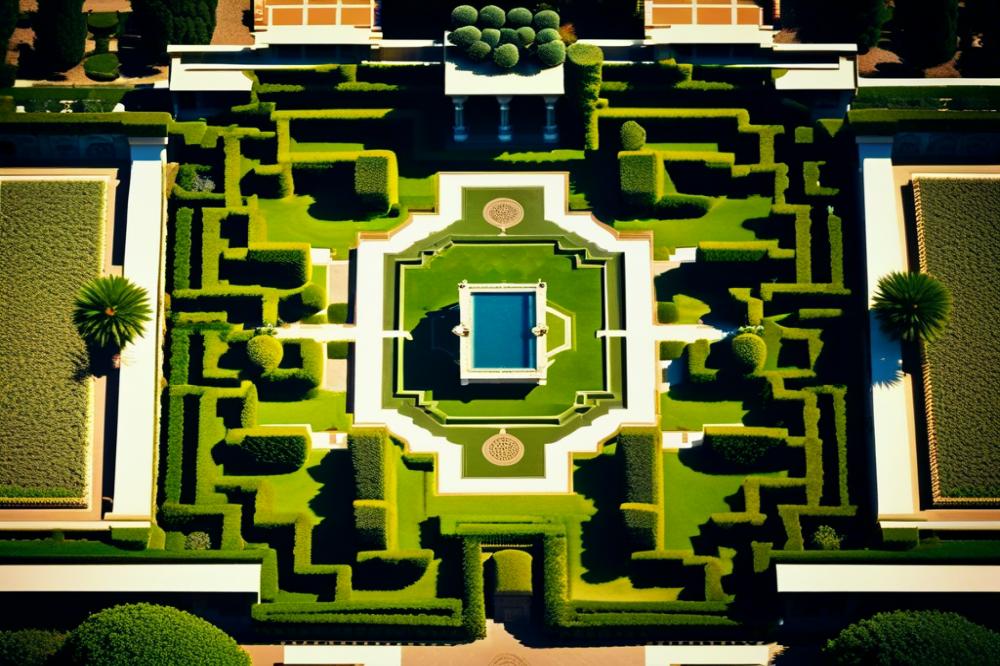
The gardens surrounding Villa Gamberaia in Florence boast a stunning variety of Mediterranean plants and flowers. These selections create a vivid canvas, demonstrating the beauty of landscape design rooted in the Renaissance. Visitors will find an array of herbs, such as rosemary and thyme, which thrive in the warm climate. Italian cypress trees line the walkways, contributing height and framework to the space. Bright blooms of lavender and oleander add splashes of color, enhancing the overall garden aesthetics.
In these historic gardens, the mix of textures and colors plays a crucial role in attracting diverse wildlife. Birds flit between branches while bees buzz around blooming flowers, enhancing the area’s biodiversity. By incorporating native species, the garden supports local fauna, making it a lively ecosystem. This blend of life helps cultivate a serene atmosphere that many find captivating.
Seasonal changes dramatically affect the visual appeal of the gardens. Spring brings forth blossoms that captivate the senses. As summer approaches, lush greenery fills the landscape, providing cool shade for leisurely strolls. Autumn introduces warm hues of orange and red, transforming the gardens into a vibrant tapestry. Winter offers a quiet beauty, with evergreen plants standing strong against the chill.
Moreover, garden tourism thrives because of this botanical beauty. Tourists flock to appreciate the delicate balance of design, allowing them to engage with Florence’s rich cultural heritage. Every corner tells a story, be it through the arrangement of plants or the ancient structures that surround them. The formal gardens entice visitors with both tranquility and inspiration, showcasing the deep connection between nature, art, and history.
Garden Tourism and Cultural Impact
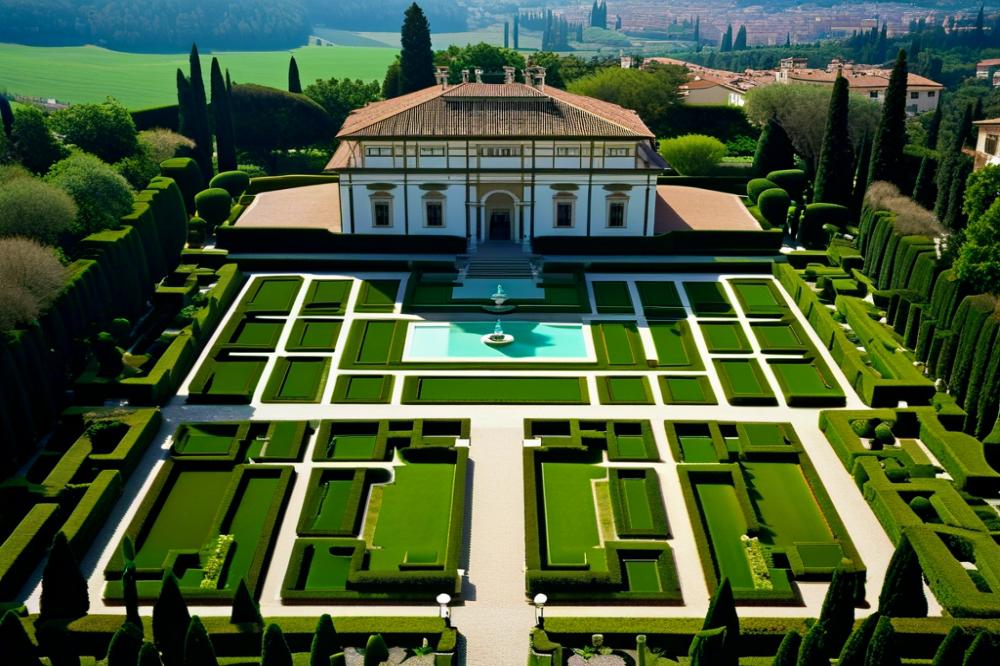
The gardens of Villa Gamberaia play a significant role in garden tourism in Florence and throughout Italy. Every year, many visitors travel to admire their stunning design and beauty. These formal gardens are not just a feast for the eyes; they also support the local economy. Tourists contribute to businesses, hotels, and restaurants in the area, creating a positive impact.
Many individuals are drawn to the intricate landscape design and the principles of Renaissance architecture that can be seen here. Garden aesthetics come alive through terraced layouts, stately hedges, and vibrant Mediterranean plants, capturing the imagination of each guest. This blend of art and nature tells a story of Italy’s rich horticultural past.
The significance of historic gardens like these is vast. They help preserve Italian botanical beauty, showcasing the country’s diverse flora. Each visit offers an opportunity to learn about cultural heritage. With guided tours and educational programs, guests can deepen their understanding of garden history and its relevance.
Educational initiatives also highlight the importance of maintaining these gardens. They serve as a reminder of Italy’s commitment to conserving its landscape and traditions. Garden tourism thus becomes not just an experience but a means to promote awareness. This awareness fosters appreciation for historic gardens, ensuring their legacy lives on for future generations.
When visitors explore the gardens, they immerse themselves in a vibrant piece of history. Beautifully manicured pathways and the elegance of the surroundings evoke feelings of tranquility and wonder. Engaging with this environment allows guests to connect with the past while enjoying the present.
In summary, the formal gardens of Villa Gamberaia stand as a testament to the beauty of Italy’s cultural and botanical heritage. Their presence enriches the tourism landscape while reminding everyone of the importance of preserving the natural world.
A Lasting Legacy in Garden Design
Villa Gamberaia stands as a testament to the artistry of formal gardens within the rich landscape of Florence. This cherished site captures the essence of Italian garden aesthetics, blending nature and architecture in a harmonious ballet. Its terraces, reflecting pools, and manicured hedges tell a story of careful planning and deep appreciation for beauty.
Several elements contribute to its fame. The meticulous design showcases principles that have influenced landscape architecture throughout history. Visitors are often struck by the symmetrical layouts, which create a sense of order and tranquility. Such designs invite exploration, allowing guests to lose themselves in the serenity of nature.
Cultural heritage shines through every corner of this garden. It provides not only a visual feast for the eyes but also serves as a reminder of Italy’s historical connection to art and design. Many find inspiration in its pathways and vistas, which echo the grandeur of Italian Renaissance traditions.
This site is more than just a garden; it is a symbol of Italy’s enduring beauty. As time passes, it remains a crucial part of Florence’s identity. Those who engage with its beauty are reminded of the importance of preserving such spaces. Villa Gamberaia indeed holds a special place in the realm of gardens, influencing future generations of garden enthusiasts and designers alike.

